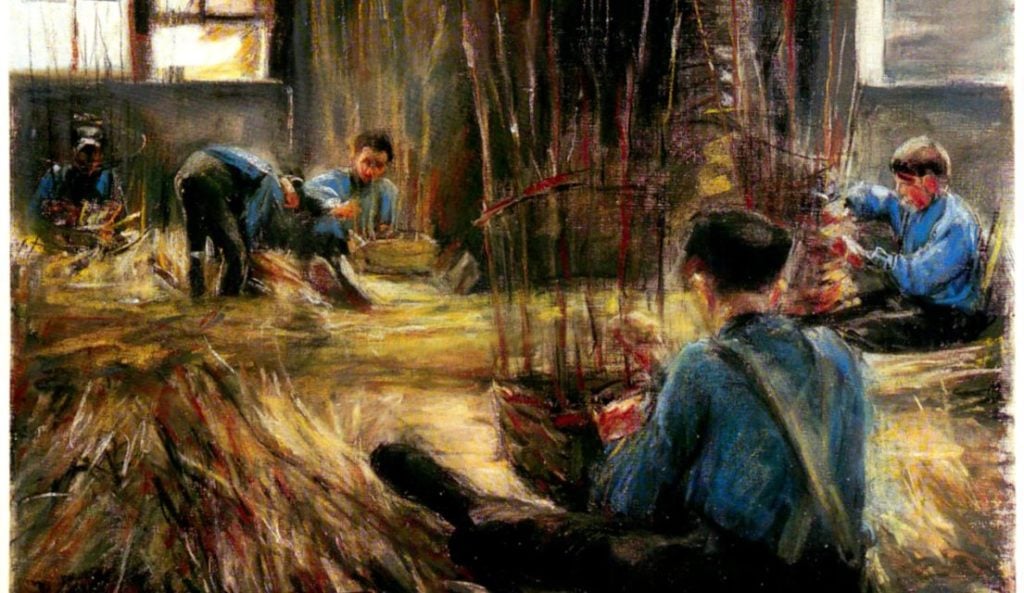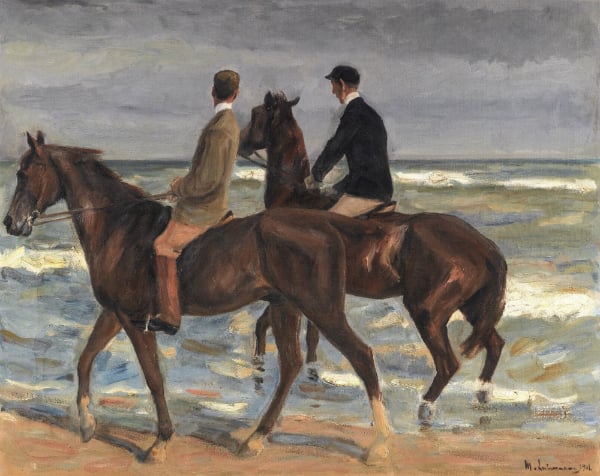People
Holocaust Survivor Sues German Auction House to Locate Family’s Nazi Looted Paintings
The auction house is contractually obliged to withhold the buyers' identities.

The auction house is contractually obliged to withhold the buyers' identities.

Hili Perlson

Retired New York attorney David Toren—blind and almost 90—whose entire family was killed by the Nazis, has petitioned German auction house Villa Grisebach to reveal the identities of the buyers of two paintings that were looted from his great uncle’s home around 1940, the New York Daily News reports.
Toren’s great uncle, industrialist David Friedmann, had 54 pieces of museum quality art in his Breslau mansion, all of which were seized by the Nazis in 1940. Toren, who escaped as a child on the Kindertransport in 1939, recently discovered that three works from his family’s collection were in the trove of Cornelius Gurlitt, son of Hitler’s art dealer, Hildebrand Gurlitt. Two of the works discovered in the Gurlitt trove were by Max Liebermann, and the third by Franz Skarbina.
According the the Art Newspaper, a Polish museum director offered Hildebrand Gurlitt the two looted Liebermann works in a letter dated 1942: Die Korbflechter (Basket Weavers) (1900) and Two Riders at the Sea (1901). The latter was returned to Toren in 2015 and sold at Sotheby’s London for a triple estimate $2.5 million.

Max Liebermann Two riders on the beach
Photo: Sotheby’s
Now, Toren wants to know the location of the other works, worth an estimated $5 million. Both were sold through the Berlin-based Villa Grisebach Auctions Inc., which has a midtown Manhattan branch. Liebermann’s Basket Weavers was sold in 2000, and Skarbina’s Nach Hause in 1995. The petition filed at NY State Supreme Court states that Grisebach has refused to identify the buyers, citing the need to maintain client confidentiality.
However, Liebermann’s Basket Weavers was commissioned to the auction house by the daughter of Hildebrand Gurlitt, a fact that Toren’s lawyer Martin Bienstock claims should have raised a red flag. “Despite the fact that Grisebach knew that it was selling Basket Weavers on behalf of the daughter of the infamous Nazi art dealer, Hildebrand Gurlitt, and that the provenance of the painting was highly questionable, Grisebach simply auctioned the painting to the highest bidder without conducting meaningful diligence of the provenance of the painting,” Bienstock writes in the court papers.

David Toren.
In an email to artnet News, Grisebach co-manager Micaela Kapitsky stressed that “the most important principle for Grisebach is that our auction house will not put on offer any works of art that are even only suspected of having been looted during the period 1933 to 1945.”
“None of the Liebermann experts we had previously consulted were aware of any indications that the painting had once been owned by David Friedmann of Breslau, and neither were we,” Kapitsky added. “As was our standard practice then and continues to be our standard practice to this day, we had every single work of art offered at that auction checked by The Art Loss Register. The provenance ‘Dr. Hildebrand Gurlitt, Düsseldorf’ disclosed in the auction catalogue did not raise any eyebrows at the time. Today, the state of research has advanced significantly, thanks also in part to the active cooperation by auction houses.”
Despite the fact that contractual obligations prevent the auction house from disclosing buyers’ names, Toren has, through independent investigation, discovered that an Israeli collector acquired Basket Weavers, Haaretz reports. Before having filed a petition in court, Toren had attempted to find the buyer’s identity through a message in the Israeli daily: “Be fair. Return the stolen art in your possession,” he pledged via Haaretz.
What’s certain is that the buyer is aware of the recent developments. Villa Grisebach’s Kapitsky told artnet news that when first details of the painting’s provenance emerged in March of 2014, “we immediately informed the present owner that the task force investigating the Munich art find had obtained further data and that the pastel painting had once been part of the collection of David Friedmann, Breslau. Obviously, we will continue to work towards a reconciliation of the parties’ interests within the scope of what is permitted under law.”
There is no available information on the buyer of the Skrabina painting.